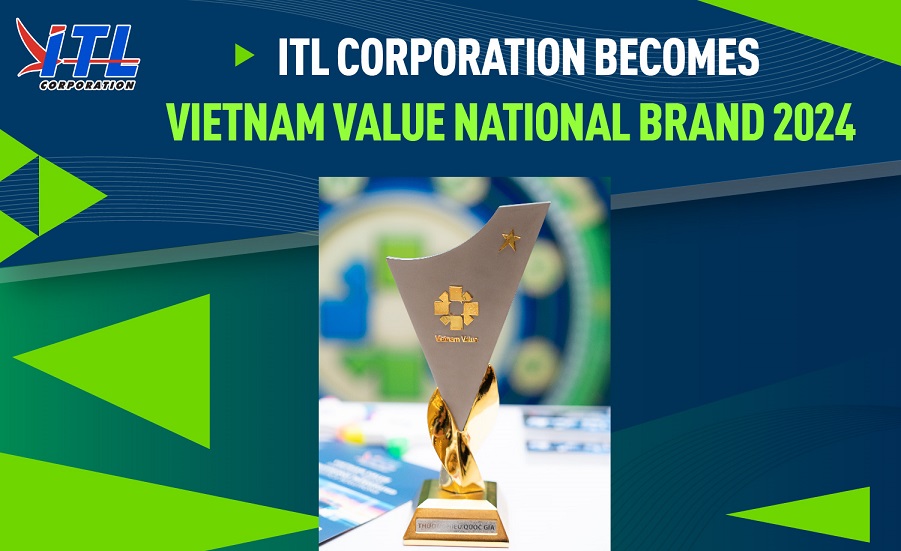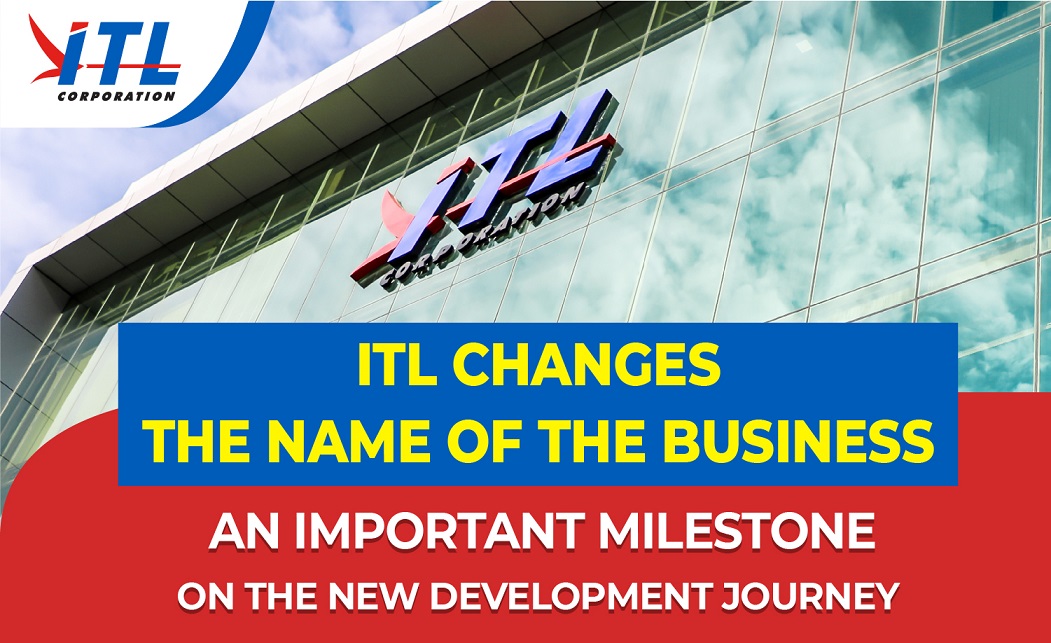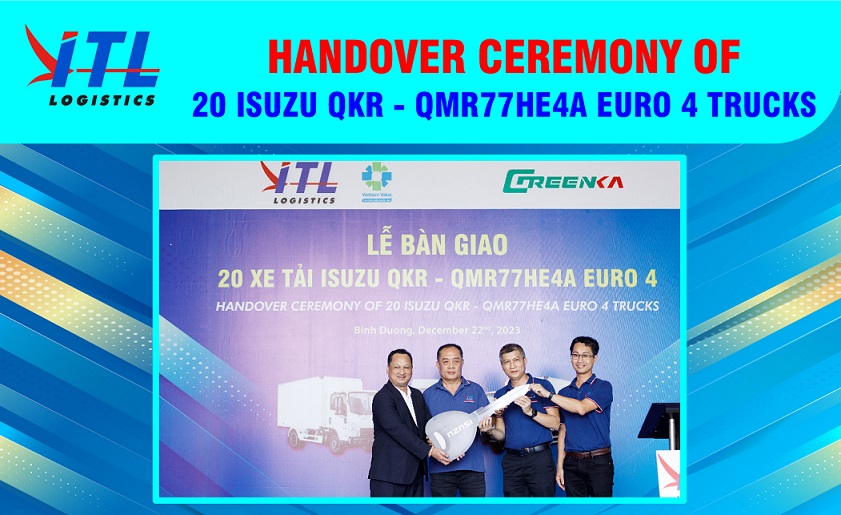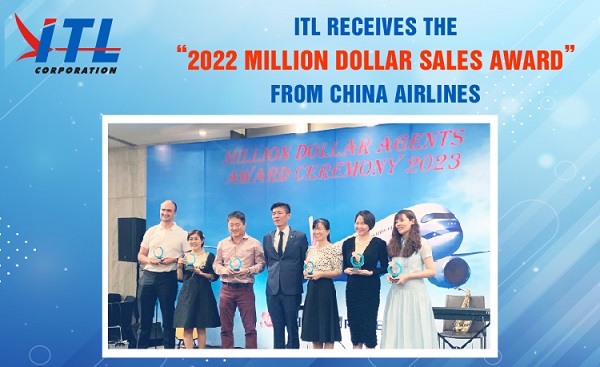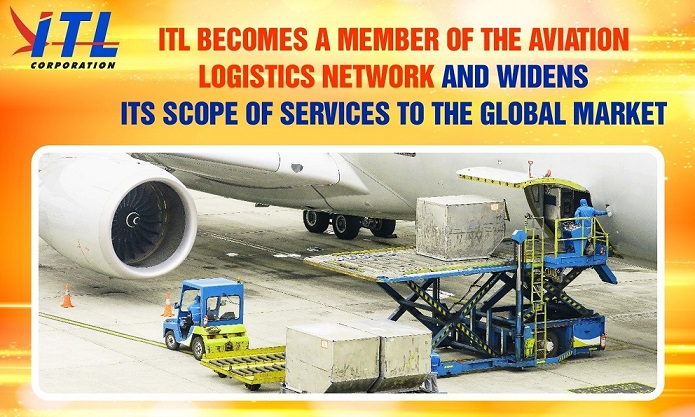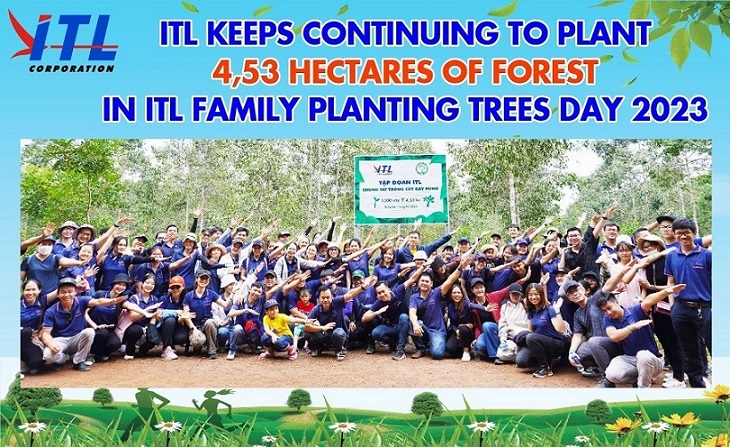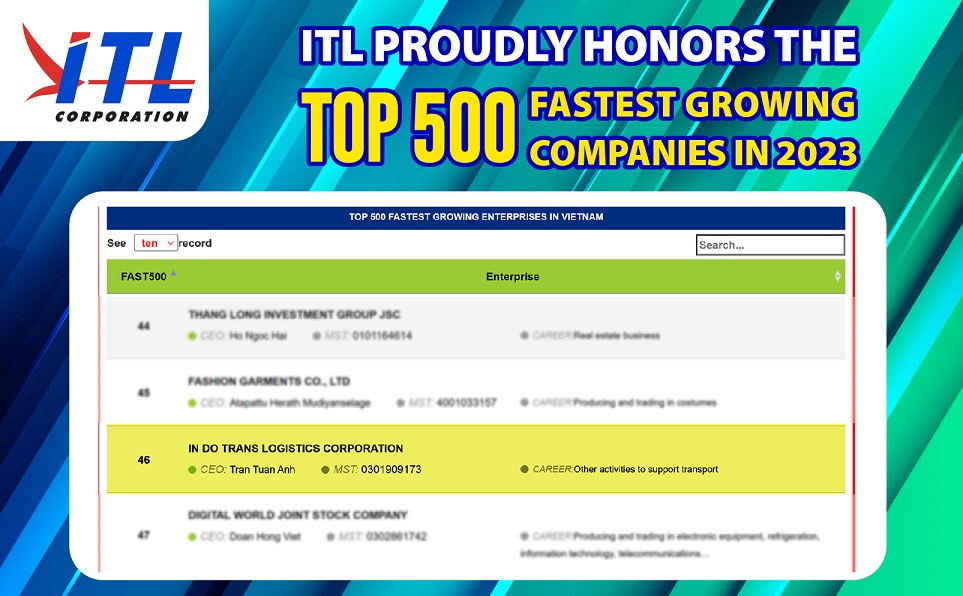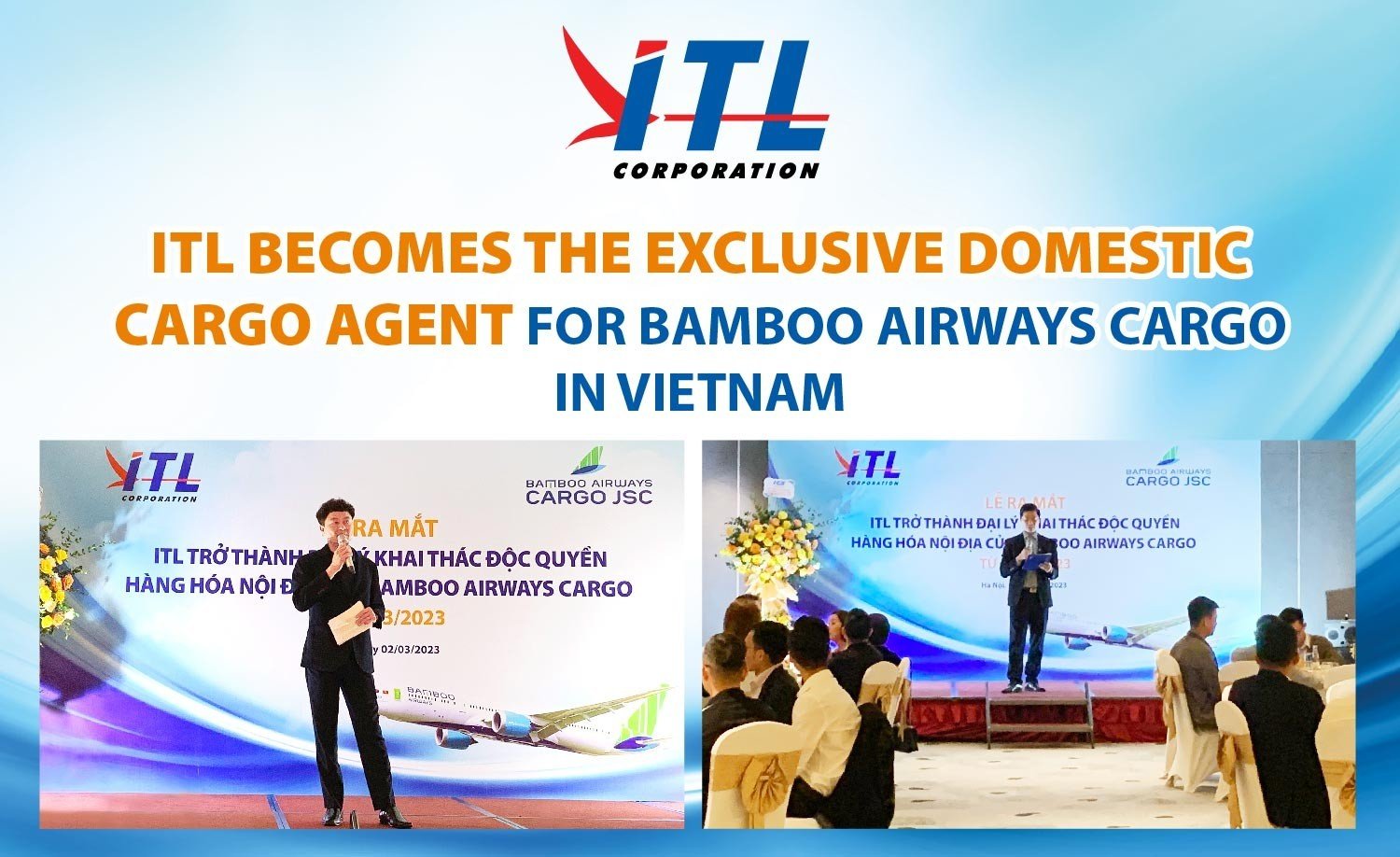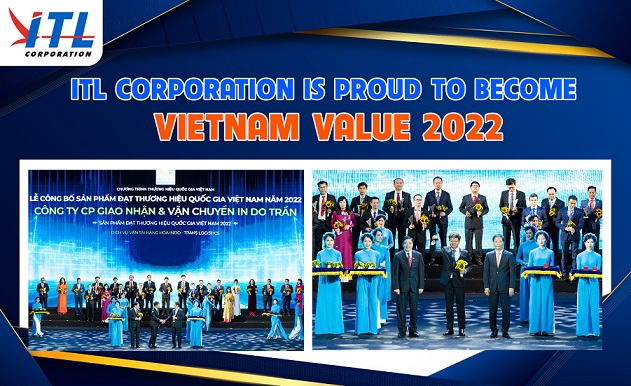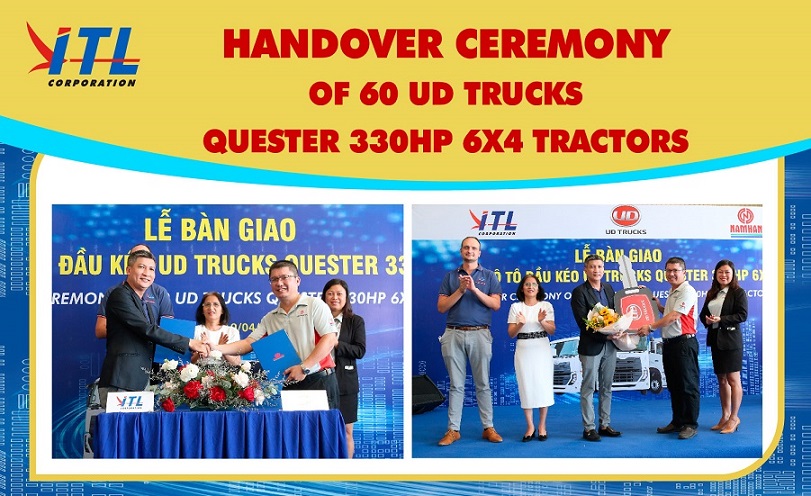19
09/19
[ITL EXPERT] MR. DAVID LIEN - DIRECTOR OF DASH LOGISTICS ITL RAILWAY, ITL DISTRIBUTION
ITL is steadfast in our railway investment & development strategy, contributing to the development of the Railway Industry , as well as towards ITL’s goal of "National Champion" in Logistics in the period of 2018 -2023.

- As an expert in the Railway Logistics services, you have been accompanying and developing the railway services in the past 5 years, so in your opinion, why have the Railway Logistics services not been customers’ priority choice compared with other freight services (Road Transport /Sea Freight, Air Freight, ...) yet?
Vietnam Railway Logistics services are quite old and backward compared with other freight services such as Air Freight, Sea Freight and Road Transport. The bottleneck of the Railway industry is still in the poor infrastructure, the management system has not kept pace with the market mechanism, high investment requires but late payback as well as operation is not clear. That is the reason why customers are hesitant, less to use the services as well as a fairly large barrier for Logistics businesses to penetrate to invest, develop the Railway Logistics services. This is the real situation of Vietnam Railway when the proportion of cargo transport by Rail (in 2018) reached less than 1% compared with the Air Freight (5%), Sea Freight (30%) and Road Transport (64%).
- Which changes do the Railway Logistics services of ITL and Yen Vien Logistics Center (Hanoi) bring to Vietnam Railway Transport market?
With the challenges mentioned as above, although ITL’s Railway Logistics services are still young, we have realized the perspectives, opportunities and desire to be a pioneer in changing the social perceptions about the Railway services.
In 2016, by investing to build the phase 1 of Yen Vien Railway Logistics Center (Hanoi), ITL is the first private enterprise in Vietnam to join the investment socialization for the Railway industry. ITL's goal is very clear when it invests in the Railway industry, upgrading the infrastructure, modernizing the terminal operation, distributing cargos at the central rail terminal as well as connecting the international railway to China.
The remarkable thing is that the Railway Logistics supplychain and operation must be developed synchronously between the Northern terminal (Yen Vien Station), Da Nang (Kim Lien Station), the Southern (Song Than Station) and the arrangement of the logical railway schedule must be focused. This is the reason why ITL has been cooperating closely with Saigon Newport Corporation (The enterprise develops the infrastructure for An Binh, Song Than terminal) and Hanoi Railway Transport Joint Stock Company (HARACO), Saigon Railway Transport Company (SARATRANS) to standardize the railway schedule.
Started in August 2019, Hanoi Railway Transport Joint Stock Company (HARACO) and ITL, Viettel, VN Post opened the express railway vessel from North to South (only 42 hours), operating daily at the first time ever.
This is the Railway service that competes directly with the trucking segment with the same lead time and low rate. This shows that if the infrastructure is modernized and the train schedule is standardized, the Railway logistics can directly compete with the Trucking transportation and share the cargo output between these means of transportation.
- The Cross-border Railway Transport (VN - China - EU) is the concerned issue currently but the actual output is not as expected. So, in your opinion, where is the bottleneck?
Defining the strategic location of the Hub railway in the North, Yen Vien terminal is able to connect smoothly with China Railway and Russia, European Railway.
However, the volume of export/import from Vietnam to China and to Europe by railway is still not high, partly due to the transport subsidy policy of China Railway. Although the transportation time is reduced by 1/3 compared with the traditional shipping by sea, the actual cost of shipping containers by rail from Vietnam to Europe crossing China is still quite high (ranging from 4,000 - 5,000 USD/container) and still complicated procedures due to the transit at many intermediate rail stations as well as intermodal customs clearance.
Currently, the China Railway still maintains the subsidy policy for export containers, but most of the policies applied for Chinese cargo to Europe to address the China commodity surplus.
In the current period, due to the US-China trade war, we can see the movements of supply chains and the factories from China to other countries such as Vietnam, Cambodia..., the development of Vietnam-China freight transport by Railway is being focused. This proves that many Chinese Logistics corporations are interested in cooperation with Vietnamese Logistics enterprises that have never been seen before.
ITL will continue to cooperate closely with China Railway Logistics to develop Cross-border Transport services, taking advantage of the strategic geographic location of Yen Vien station as the gateway connecting China and Vietnam Railway. We are steadfast in our railway investment and development strategy and contribute to the Railway Logistics services’ development, as well as towards the goal of "National Champion" in Logistics in the period of 2018 -2023.
- How do you evaluate the role of Road transport, especially the segment of the Less than Container Load services (LCL) in the Logistics market today?
Be a vibrant transport segment with a lot of competitors, the Less than Container Load services from North to South is supposed to be like the blood vessels in a body, which transport goods to all the locations nationwide. This is the reason why some "station wagon" have been opened to meet the needs of society.
As the segment of LCL (Less than Container Load) services is under many different shippers and different cargo sizes, packed into the same truck or container truck, the transportation and cargo package require a certain standard to ensure the safety as well as optimize the cost, and the fastest delivery.
In addition to the mobility and convenience of the Road transport, the biggest weakness of the Less than Container Load services is the safety of goods, if the damage happens the compensation can be up to 4-5% because the cargos are heterogeneous and stacked to save costs. In addition, the price and transparency during transportation are also the factors that make customers consider carefully to choose the solid Logistics enterprises.
Dash Logistics is a joint venture company between ITL and Singapore Post Corporation, established in 2011 to meet the market demand. After 8 years operation, Dash Logistics has created a solid position as the LCL transporter of many well-known Clients and Manufacturers in Vietnam. Based on the optimized pick/pack, storage technology and being invested in the specialized vehicles 48-53’ with the mobile racking floors, the damage ratio cargo has been dropped dramatically at a rate of less than 0.5%. It is a positive point, along with the quality of service and reasonable price as well as transparent track and trace information.
With the development of the technology, we have successfully applied the shared economy concept that utilize the empty vehicles and one-way vehicle from North to South aiming to optimize the costs and improve productivity. The difference compared with the market is that we apply Dash's standards in handling, packaging, cargo monitoring and creating an unlimited vehicle, meeting the needs of the LCL market transportation.

- As an expert in the Railway Logistics services, you have been accompanying and developing the railway services in the past 5 years, so in your opinion, why have the Railway Logistics services not been customers’ priority choice compared with other freight services (Road Transport /Sea Freight, Air Freight, ...) yet?
Vietnam Railway Logistics services are quite old and backward compared with other freight services such as Air Freight, Sea Freight and Road Transport. The bottleneck of the Railway industry is still in the poor infrastructure, the management system has not kept pace with the market mechanism, high investment requires but late payback as well as operation is not clear. That is the reason why customers are hesitant, less to use the services as well as a fairly large barrier for Logistics businesses to penetrate to invest, develop the Railway Logistics services. This is the real situation of Vietnam Railway when the proportion of cargo transport by Rail (in 2018) reached less than 1% compared with the Air Freight (5%), Sea Freight (30%) and Road Transport (64%).
- Which changes do the Railway Logistics services of ITL and Yen Vien Logistics Center (Hanoi) bring to Vietnam Railway Transport market?
With the challenges mentioned as above, although ITL’s Railway Logistics services are still young, we have realized the perspectives, opportunities and desire to be a pioneer in changing the social perceptions about the Railway services.
In 2016, by investing to build the phase 1 of Yen Vien Railway Logistics Center (Hanoi), ITL is the first private enterprise in Vietnam to join the investment socialization for the Railway industry. ITL's goal is very clear when it invests in the Railway industry, upgrading the infrastructure, modernizing the terminal operation, distributing cargos at the central rail terminal as well as connecting the international railway to China.
The remarkable thing is that the Railway Logistics supplychain and operation must be developed synchronously between the Northern terminal (Yen Vien Station), Da Nang (Kim Lien Station), the Southern (Song Than Station) and the arrangement of the logical railway schedule must be focused. This is the reason why ITL has been cooperating closely with Saigon Newport Corporation (The enterprise develops the infrastructure for An Binh, Song Than terminal) and Hanoi Railway Transport Joint Stock Company (HARACO), Saigon Railway Transport Company (SARATRANS) to standardize the railway schedule.
Started in August 2019, Hanoi Railway Transport Joint Stock Company (HARACO) and ITL, Viettel, VN Post opened the express railway vessel from North to South (only 42 hours), operating daily at the first time ever.
This is the Railway service that competes directly with the trucking segment with the same lead time and low rate. This shows that if the infrastructure is modernized and the train schedule is standardized, the Railway logistics can directly compete with the Trucking transportation and share the cargo output between these means of transportation.
- The Cross-border Railway Transport (VN - China - EU) is the concerned issue currently but the actual output is not as expected. So, in your opinion, where is the bottleneck?
Defining the strategic location of the Hub railway in the North, Yen Vien terminal is able to connect smoothly with China Railway and Russia, European Railway.
However, the volume of export/import from Vietnam to China and to Europe by railway is still not high, partly due to the transport subsidy policy of China Railway. Although the transportation time is reduced by 1/3 compared with the traditional shipping by sea, the actual cost of shipping containers by rail from Vietnam to Europe crossing China is still quite high (ranging from 4,000 - 5,000 USD/container) and still complicated procedures due to the transit at many intermediate rail stations as well as intermodal customs clearance.
Currently, the China Railway still maintains the subsidy policy for export containers, but most of the policies applied for Chinese cargo to Europe to address the China commodity surplus.
In the current period, due to the US-China trade war, we can see the movements of supply chains and the factories from China to other countries such as Vietnam, Cambodia..., the development of Vietnam-China freight transport by Railway is being focused. This proves that many Chinese Logistics corporations are interested in cooperation with Vietnamese Logistics enterprises that have never been seen before.
ITL will continue to cooperate closely with China Railway Logistics to develop Cross-border Transport services, taking advantage of the strategic geographic location of Yen Vien station as the gateway connecting China and Vietnam Railway. We are steadfast in our railway investment and development strategy and contribute to the Railway Logistics services’ development, as well as towards the goal of "National Champion" in Logistics in the period of 2018 -2023.
- How do you evaluate the role of Road transport, especially the segment of the Less than Container Load services (LCL) in the Logistics market today?
Be a vibrant transport segment with a lot of competitors, the Less than Container Load services from North to South is supposed to be like the blood vessels in a body, which transport goods to all the locations nationwide. This is the reason why some "station wagon" have been opened to meet the needs of society.
As the segment of LCL (Less than Container Load) services is under many different shippers and different cargo sizes, packed into the same truck or container truck, the transportation and cargo package require a certain standard to ensure the safety as well as optimize the cost, and the fastest delivery.
In addition to the mobility and convenience of the Road transport, the biggest weakness of the Less than Container Load services is the safety of goods, if the damage happens the compensation can be up to 4-5% because the cargos are heterogeneous and stacked to save costs. In addition, the price and transparency during transportation are also the factors that make customers consider carefully to choose the solid Logistics enterprises.
Dash Logistics is a joint venture company between ITL and Singapore Post Corporation, established in 2011 to meet the market demand. After 8 years operation, Dash Logistics has created a solid position as the LCL transporter of many well-known Clients and Manufacturers in Vietnam. Based on the optimized pick/pack, storage technology and being invested in the specialized vehicles 48-53’ with the mobile racking floors, the damage ratio cargo has been dropped dramatically at a rate of less than 0.5%. It is a positive point, along with the quality of service and reasonable price as well as transparent track and trace information.
With the development of the technology, we have successfully applied the shared economy concept that utilize the empty vehicles and one-way vehicle from North to South aiming to optimize the costs and improve productivity. The difference compared with the market is that we apply Dash's standards in handling, packaging, cargo monitoring and creating an unlimited vehicle, meeting the needs of the LCL market transportation.
ITL Corporation
